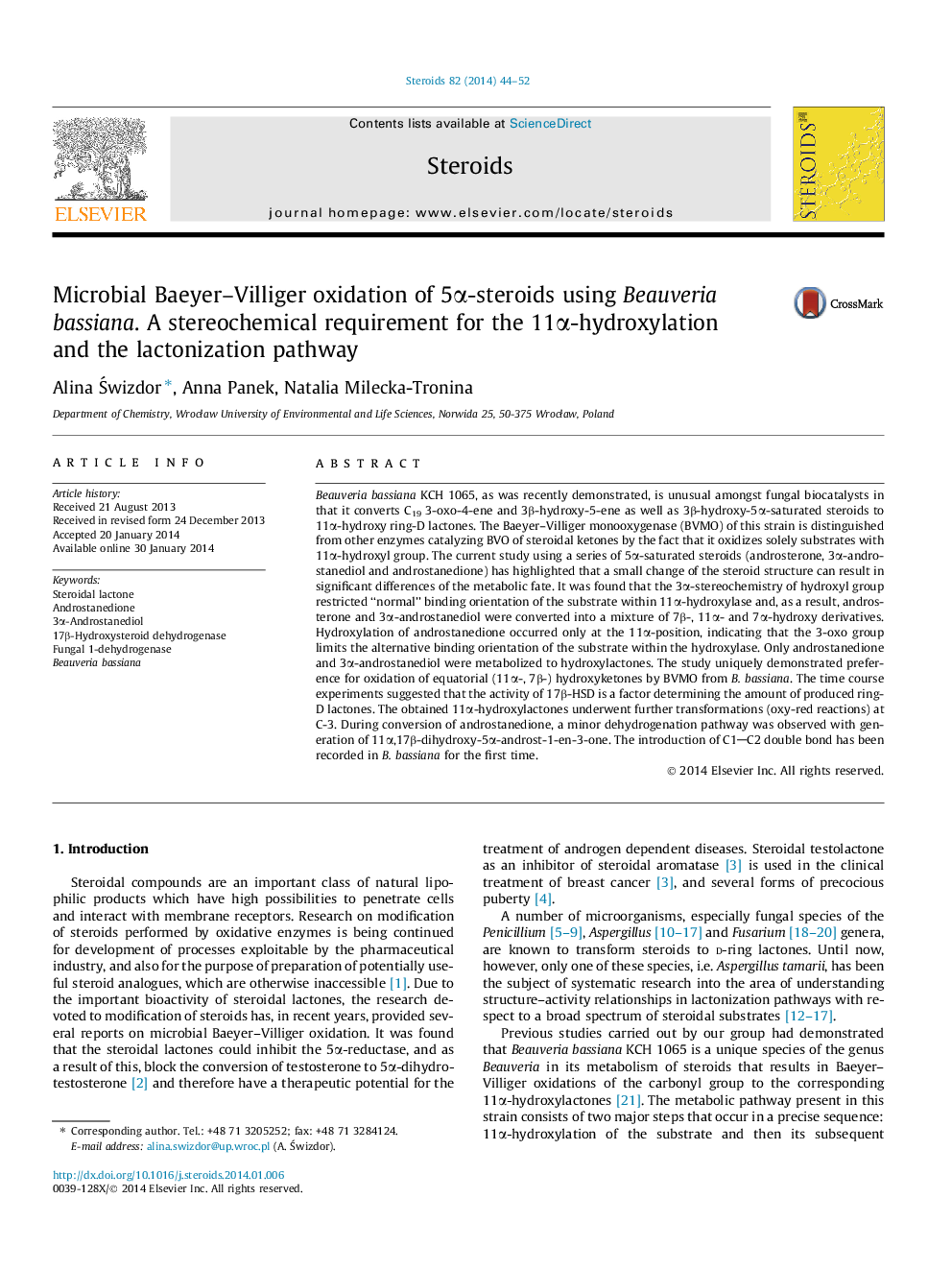| کد مقاله | کد نشریه | سال انتشار | مقاله انگلیسی | نسخه تمام متن |
|---|---|---|---|---|
| 2027688 | 1542725 | 2014 | 9 صفحه PDF | دانلود رایگان |

• 5α-Steroids were metabolized to hydroxy ring-D lactones.
• Preference for oxidation of equatorial hydroxyketones by BVMO is demonstrated.
• 17β-HSD activity has decisive impact on the amount of the formed lactones.
• For 3α-OH steroids the 17β-hydroxy group is necessary for activity of 17β-HSD.
• 5α-Saturated 11α-hydroxylactones underwent the oxy-red transformations at C-3.
Beauveria bassiana KCH 1065, as was recently demonstrated, is unusual amongst fungal biocatalysts in that it converts C19 3-oxo-4-ene and 3β-hydroxy-5-ene as well as 3β-hydroxy-5α-saturated steroids to 11α-hydroxy ring-D lactones. The Baeyer–Villiger monooxygenase (BVMO) of this strain is distinguished from other enzymes catalyzing BVO of steroidal ketones by the fact that it oxidizes solely substrates with 11α-hydroxyl group. The current study using a series of 5α-saturated steroids (androsterone, 3α-androstanediol and androstanedione) has highlighted that a small change of the steroid structure can result in significant differences of the metabolic fate. It was found that the 3α-stereochemistry of hydroxyl group restricted “normal” binding orientation of the substrate within 11α-hydroxylase and, as a result, androsterone and 3α-androstanediol were converted into a mixture of 7β-, 11α- and 7α-hydroxy derivatives. Hydroxylation of androstanedione occurred only at the 11α-position, indicating that the 3-oxo group limits the alternative binding orientation of the substrate within the hydroxylase. Only androstanedione and 3α-androstanediol were metabolized to hydroxylactones. The study uniquely demonstrated preference for oxidation of equatorial (11α-, 7β-) hydroxyketones by BVMO from B. bassiana. The time course experiments suggested that the activity of 17β-HSD is a factor determining the amount of produced ring-D lactones. The obtained 11α-hydroxylactones underwent further transformations (oxy-red reactions) at C-3. During conversion of androstanedione, a minor dehydrogenation pathway was observed with generation of 11α,17β-dihydroxy-5α-androst-1-en-3-one. The introduction of C1C2 double bond has been recorded in B. bassiana for the first time.
Figure optionsDownload as PowerPoint slide
Journal: Steroids - Volume 82, April 2014, Pages 44–52